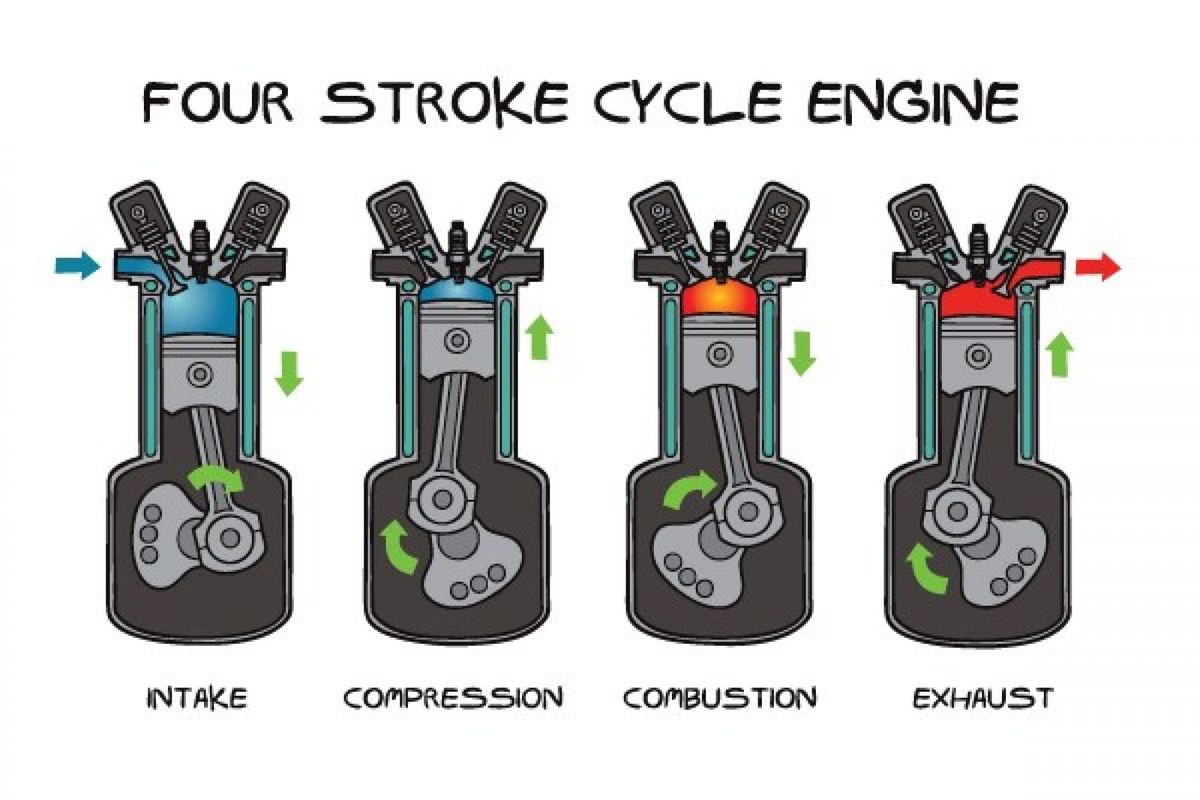Pops and bangs / exhaust crackles / flames / overrun what exactly is happening, is it all the same and how do we tune for it?
Yeah, I've got a 'pop and bang' map, bruv.
Pops and bangs have quickly become one of the most hated and polarizing tuning features, mostly owing to tuners getting carried away with the degree to which it's implemented. We're often asked to add pops and bangs or exhaust crackles to cars that we tune, and whether pops and bangs is the same as exhaust crackles. Let's cover exactly what is happening, before we cover the differences:
Of the four strokes in the normal combustion engine process, the ones of importance are the combustion and exhaust strokes. The spark-plug ignites the intake charge, the expanding exhaust gasses perform work on the piston-top, and the spent gasses are then evacuated into the exhaust port under their own pressure.
So how do we modify this cycle to make crackling & gurgling sounds from the exhaust? Well expanding fuel of a set type has a set rate of expansion, which means that regardless of engine speed, the flame front will travel at the same speed (all else kept constant, AFR etc). As the flame front expands it loses energy, as that energy is transferred from heat into kinetic energy. Sound energy is essentially heat energy, it's the air vibrations caused by expanding gasses. As the combustion cycle progresses the sound energy decreases, if we want that sound to be more present in the exhaust stroke (the one that's heard), we need to delay the combustion event. We do that by retarding the ignition timing by between 15 and 25 degrees. This causes the combustion event to be late, the energy transfer process to be delayed, and more sound (and heat) energy to enter the exhaust.
This is done during the overrun process, that is, off-throttle, when the throttle blade is almost completely closed and the car is in gear, or free-revving. There is a small window during overrun when the injectors are still supplying a small amount of fuel, enough to provide the energy for the combustion process. After this window closes, the injectors turn off and the crackles stop.

This premise is behind every kind of exhaust crackle, pop and bang and "flame" map out there. So what is the difference between all of these implementations?
It's all about the intensity of the implementation, it's a sliding scale as follows:

Mild ignition retard on overrun, without modification to the overrun fuelling results in (at least we think so) a pleasant sound that adds to the overall experience of a tuned vehicle. HOWEVER, extreme ignition retard means much more of the harsh sound of combustion makes it into the exhaust stroke, creating loud bangs and gunshots. Adding additional fuel into the overrun tables only serves to increase the sound and annoying factor.
Nobody thinks your annoying pops and bangs are cool, Kyle
Adding even more fuel to the point of virtual bore-wash will get you your 'flame tune' as the fuel washes out of the exhaust valves, combusting inside the exhaust or turbo manifold and making it all the way to the tailpiece.
The next question we are often asked is:
Is it safe for the motor or turbo?
The answer is yes and no, if the implementation is reasonable and doesn't involve extreme ignition retard and fuel dumping, then yes, it's perfectly safe. The overall level of energy entering the exhaust is still very low, as the throttle is 98% closed during this process. However if you opt for the Kyle approach, which is extreme retard, fuel dumping and abuse the implementation by constantly keeping the revs high and keeping overrun active, you will see significantly elevated exhaust gas temperatures that could over time damage the exhaust wheel of your turbo. Keep in mind that pops and bangs / crackles, are orders of magnitude less extreme than anti-lag / 2-step launch control / spark-cut rev limiters and other race features. An improper tune that allows EGTs to spike under boost is also far more dangerous for motor and turbo safety.
Many OEMs offer native (embedded) support for exhaust crackles, more often referred to as 'impulse combustion'. An example of this is the SIMOS12/18 in the Audi S3 8V or Golf 7R, the MEVD17 in the F-series performance models, amongst others. A native support is always superior as there are additional controls, like CAT temperature and EGT temperature thresholds that will disable the feature if the temps rise too much (This doesn't prevent tuners from turning these limits off), but when tuned sensibly allow for a complete implementation.
We have been implementing exhaust crackles for over 5 years, and have never attributed degradation in turbo or motor life to exhaust crackles.
Thanks for reading, and if you haven't already, subscribe for browser notifications for new blog posts and login with your thanas/FB details and leave a like or comment!
P.S look at that beautiful L500 exhaust wheel <3